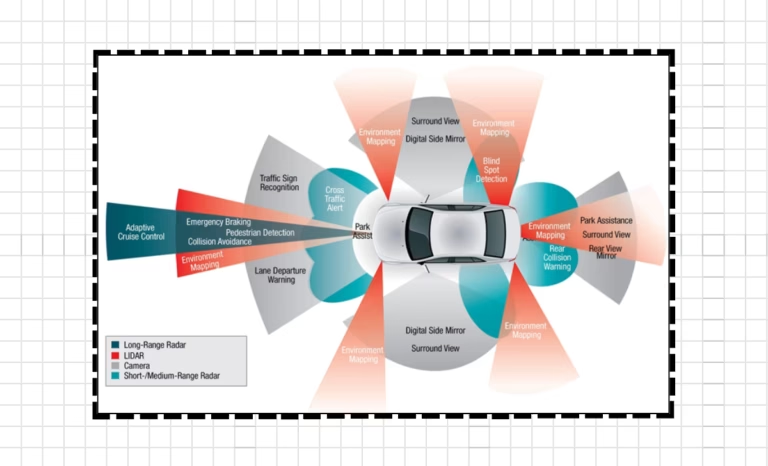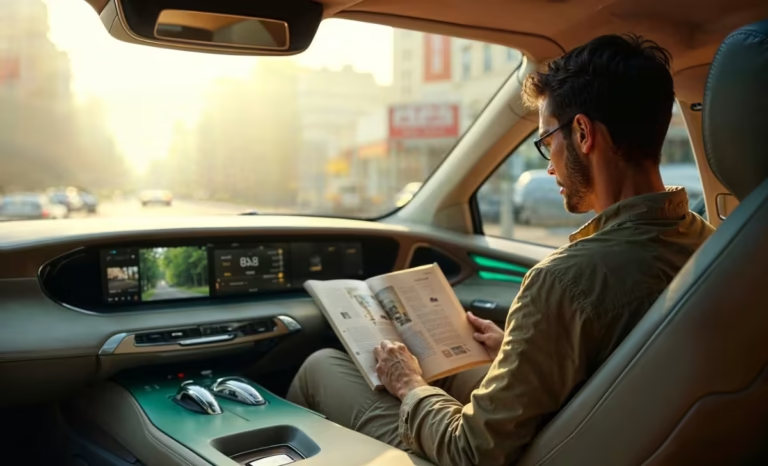In a world where vehicular needs vary widely from family to family, finding the perfect car that fits everyone’s demands can be quite a task. A conversation that often emerges in households around the country is the all-too-familiar debate: minivan or SUV? This discourse is both fascinating and complex, with both types of vehicles bearing unique hallmarks and perks. From historical footprints to performance, fuel economy, comfort and interior space, safety ratings, and the cost of ownership, every aspect shapes the buyer’s choice, sprinting far beyond the realms of just color and brand.
In this article
In this article
Understanding Minivans and SUVs
Understanding Minivans and SUVs
Minivans and SUVs (Sports Utility Vehicles) are two types of vehicles commonly used by families or large parties for their extra passenger and cargo space. They both offer distinct features that cater to different user needs and preferences.
Minivans, also known as Multi-Purpose Vehicles (MPVs), are essentially a box on wheels aimed at offering maximum interior space for passengers and luggage. They typically have three rows of seating and can accommodate up to seven or eight passengers. Sliding rear doors are another common feature, providing easier access to the rear seats, particularly in tight parking spaces. Some popular minivan models include the Honda Odyssey, Toyota Sienna, and Chrysler Pacifica.
On the other hand, SUVs are more rugged and powerful, capable of off-road driving and towing heavy loads. They too offer ample space but with a taller, more robust body build which often gives drivers a higher seating position and better visibility. SUVs can range from smaller models like the Honda CR-V and Toyota RAV4 to larger ones like the Ford Expedition or Chevrolet Tahoe.
The creation of minivans and SUVs stemmed from different needs and periods. Minivans emerged in the early 1980s as a more family-friendly alternative to station wagons and full-sized vans, offering the same capacity with better fuel efficiency and car-like driving characteristics.
SUVs originated from military vehicles post World War II, transitioning into civilian use in the 1960s. They weren’t as popular initially due to high fuel consumption and perceived instability, but advancements in technology and design, coupled with shifting consumer preferences, soon put SUVs in the limelight, with their popularity still undeterred today.
The decision to choose between a Minivan or an SUV ultimately depends on the specific needs and lifestyle of the buyer. For those prioritizing space, comfort, and ease of access, a Minivan would be a better fit. However, for users who require more power for tasks like towing, or desire the ability to traverse rough terrains, an SUV would prove to be more beneficial.
Exploring the SUV Popularity
In recent times, we’ve seen a significant rise in the popularity of SUVs. Many people are swayed by the elevated seating position that offers a superior view of the road, and the sense of increased safety that comes with a larger vehicle. Moreover, the possession of an SUV has grown to be a status symbol, stemming from a desire to stick with contemporary consumer patterns.

Performance and Fuel Economy
Comparing Performance and Fuel Economy: Minivan vs SUV
When it comes to choosing a suitable vehicle for a family’s needs, a common predicament emerges – minivan or SUV? Factors such as performance, fuel economy, and the respective environmental footprint play a big role in the decision-making process.
Most minivans and SUVs provide an adequate level of engine power and speed for routine driving. Nevertheless, due to their larger, frequently more potent engines, SUVs tend to offer higher horsepower than minivans. In contrast, minivans might not match up to SUVs in terms of power but excel in smooth, consistent handling – an ideal feature for families with young children.
For those who deem speed and acceleration as critical aspects, SUVs typically have an edge over minivans. Yet, this needs strategic utilization as excessive speed can potentially affect an SUV’s stability, especially at high velocities.
Minivans, noted for their car-like driving feel, offer easy steering and braking, supported by a smoother ride quality. This is due to their lower ground clearance and unibody structure akin to cars. Conversely, some drivers might find larger SUVs slightly more challenging to handle due to their higher center of gravity and truck-like build.
Where off-road capabilities are concerned, SUVs undoubtedly reign superior. Many models are fortified with robust 4WD or AWD systems that smoothly navigate challenging terrains and varying weather conditions. In contrast, with their lesser ground clearance, minivans aren’t built for off-road journeys.
Fuel Efficiency and Environmental Impact: Minivan vs SUV
Minivans often come out on top in terms of fuel efficiency when compared to SUVs. Their lighter weight and superior aerodynamics play significant roles, enabling them to consume less fuel than comparable SUVs. Some manufacturers even offer hybrid or fully electric minivans, adding to their fuel efficiency advantage.
SUVs are typically heavier and come with more powerful engines that increase their fuel consumption. Many also incorporate 4WD systems, further increasing their fuel use. However, it’s worth noting that improvements are being made, with some manufacturers now offering hybrid models or smaller engines that consume less fuel.
Both minivans and SUVs contribute to greenhouse gas emissions, with the degree of these emissions largely hinging on their fuel consumption rates. In essence, the more fuel a vehicle requires, the more emissions it generates. As a result, minivans, with their better fuel efficiency, generally maintain a smaller carbon footprint compared to fuel-thirstier SUVs.
In essence, SUVs may boast impressive horsepower, high speed and unbeatable off-road capabilities. However, minivans counter with better handling and fuel efficiency, alongside lower greenhouse gas emissions. Choosing between the two will, therefore, come down to aligning with your specific needs and circumstances.

Comfort and Interior Space
Comfort and Interior Space: Minivan vs SUV
When it comes to comfort and interior spacing, both minivans and SUVs have their own unique strengths. However, they each cater to slightly different priorities and lifestyle requirements. Read on to discover how they match up in those areas.
Seating Capacity and Cargo Space
Minivans typically offer seating for seven or eight passengers, with many models offering flexible seating configurations for added versatility. The third-row seats of minivans are generally more spacious and comfortable than those found in SUVs, often making them a preferred option for families with multiple children. Moreover, minivans frequently have more cargo space behind the third-row seats than an equivalent SUV, making them ideal for family vacations or hauling large items.
On the other hand, SUVs typically offer more flexible seating capacities, with options for five, seven, or even nine passengers in some models. Their higher ground clearance also provides a larger cargo area underneath the vehicle. Unlike Minivans, many SUVs come with the option to tow heavy trailers, adding another dimension to their utility.
Passenger Comfort and Interior Layout
When it comes to passenger comfort, minivans generally excel as they are designed for long-distance family travel. They often feature a wider and longer body, providing more legroom and headroom for passengers. Many minivans also offer features such as rear-seat entertainment systems, reclining seats, and ambient interior lighting to enhance the overall comfort level.
Conversely, SUVs also offer a considerable amount of comfort, often borrowing premium features from luxury car lines. The seats are more elevated, providing passengers with a better view of the surroundings. Although third-row seating can be a squeeze for adults, middle-row passengers often enjoy ample space. Moreover, SUVs often come with all-wheel drive, providing a smoother and safer ride in adverse weather conditions.
Also, Read: Mastering Motorcycle Chain Cleaning in Simple Steps
Accessibility Features for Children and Elderly Passengers
In terms of accessibility, minivans are well renowned for their sliding rear doors, which can be a lifesaver in tight parking lots and make it easier for passengers to get in and out. The low floor height also makes it simpler for children and elderly passengers to access the vehicle. Some minivans even offer power-operated doors, and in-vehicle intercom systems to facilitate communication.
On the contrary, SUVs have higher seat heights, which can be more challenging for shorter individuals, children, or older adults to access. However, many SUVs offer running boards or side steps to aid access, and higher-end models may provide adjustable air suspensions that can lower the vehicle for easier entry and exit.
Final Thoughts
When it comes to selecting between a minivan and an SUV, the decision largely hinges on your specific needs and preferences. Each of these vehicle types has its own unique set of advantages and disadvantages in terms of interior space and comfort.

Safety Ratings and Features
Safety Comparisons: Minivans vs. SUVs
Data from the Insurance Institute for Highway Safety (IIHS) indicates that minivans typically perform better in crash tests compared to most SUVs. This might be due to their lower center of gravity, reducing their risk of rollovers. Top-notch minivan models, such as the Honda Odyssey and Chrysler Pacifica, have been recognized with the IIHS Top Safety Pick+ award, reflecting their superior crash protection and preventability features.
On the other hand, SUVs display a range of safety ratings. Smaller crossover SUVs like the Subaru Forester and Ford Edge have earned high ratings from IIHS. However, some of the larger SUVs tend to score lower, possibly due to their higher ground clearance and center of gravity, which increase the risk of rollovers, particularly if they lack advanced stabilization technology.
Safety Features: Minivans vs. SUVs
In terms of safety features, both minivans and SUVs come equipped with standard features such as airbags, anti-lock braking systems (ABS), traction control, and electronic stability control. These technologies are designed to keep passengers safe by preventing accidents and minimizing the impact when they occur.
However, many new minivans are now offering more advanced safety technologies. For example, some minivans feature blind-spot monitoring, lane departure warnings, automatic emergency braking, and rear-cross traffic alert. Others even have features like forward-collision warnings, adaptive cruise control, and automatic high-beam headlights. These high-tech systems can help protect all passengers, fend off potential accidents, and boost the driver’s awareness of the surroundings.
SUVs are also embracing these high-tech features, though their availability often depends on the brand and model. Some high-end SUVs offer luxury safety features like night-vision systems, heads-up display, and multi-angle camera systems for a full 360-degree view.
Understanding Consumer Reviews and Preferences
Consumer reviews provide valuable insights into the strengths and weaknesses of both minivans and SUVs. Many consumers are drawn to minivans due to their substantial interior space, sliding doors, accommodations for children, and impressive safety ratings. On the other hand, some are more attracted to SUVs, owing to their off-road capabilities, elevated driving position, and their rugged aesthetic.
In essence, the decision between a minivan and an SUV largely hinges on personal needs and priorities. Whilst some may place greater importance on safety ratings, others might gravitate towards vehicles known for off-road prowess or enhanced safety features. That being said, it is always recommended for prospective buyers to conduct thorough research and consider their specific needs before finalizing their decision.

Cost of Ownership and Resale Value
Comparing Purchase Prices for Minivans vs SUVs
An important aspect to consider when comparing minivans and SUVs is the initial purchase price. Generally speaking, new minivans such as the Honda Odyssey, Toyota Sienna, and Chrysler Pacifica are priced lower than their SUV counterparts like the Honda Pilot, Toyota Highlander, and Jeep Grand Cherokee. Nonetheless, adding high-end trims or extra features can significantly push up the cost of both minivans and SUVs. Therefore, these considerations should also play a role in the decision-making process.
Maintenance Costs: Minivan vs SUV
Maintenance costs between minivans and SUVs vary depending on the specific make and model of the vehicle. However, SUVs often have higher maintenance costs than minivans in general due to their larger size and increased weight, which can result in a higher wear-and-tear rate. Regular upkeep tasks like oil changes, tire rotations, and brake inspections can add up over time, making SUVs potentially more expensive to maintain.
Insurance Premiums: Minivan vs SUV
Insurance rates also play a role in the overall cost of ownership. Minivans are generally cheaper to insure than SUVs. This is because minivans are predominantly driven by adults, often with children, and hence are perceived to be involved in fewer accidents relative to SUVs. Also, they tend to cause less damage to other vehicles in an accident due to their size and weight. As a result, insurance companies typically charge less for minivan policies.
Also, Read: Exploring the World of Fastest Motorcycles: Speed, History, and Safety
Depreciation and Resale Value: Minivan vs SUV
When it comes to the resale value, SUVs generally tend to hold their value better than minivans. This is due in part to consumer preference – SUVs are generally more popular and in demand, hence they often command higher prices on the used market. However, the rate of depreciation can depend on various factors including the car’s condition, mileage, and market trends. Notably, both minivans and SUVs tend to depreciate faster than smaller vehicles.
Cost of Fuel: Minivan vs SUV
Fuel efficiency is another significant aspect when considering cost. Typically, minivans tend to get better gas mileage than larger, more robust SUVs. This pattern can make a noteworthy difference in annual fuel costs, especially if the vehicle is used for daily commuting or long trips.
In summary
while both minivans and SUVs can serve similar purposes, such as family transportation, their respective costs of ownership differ considerably. On balance, minivans generally cost less to buy, insure, fuel, and maintain. On the other hand, they may also depreciate more rapidly, and thus provide less return when sold or traded in. It’s essential to consider these financial aspects alongside practical needs and preferences when choosing between these two types of vehicles.

Regardless of personal preference, one thing is clear—both minivans and SUVs have made indelible marks on the automotive landscape. They are the embodiment of familial transportation needs, each with its distinctive set of pros and cons. The best choice between a minivan or an SUV ultimately boils down to individual needs, lifestyle, comfort requirements, and budget considerations. So, whether it’s the roomy, easy-access convenience of a minivan or the rugged, versatile allure of an SUV, your choice will be a testament to your priorities on the road to making memorable journeys.




